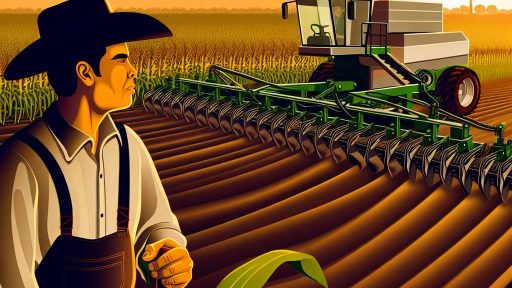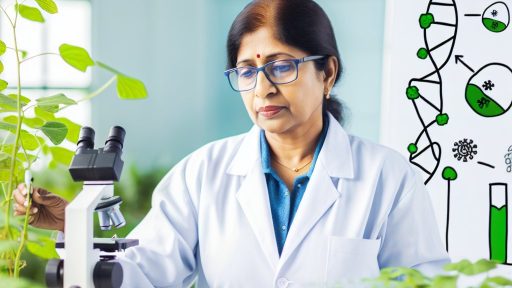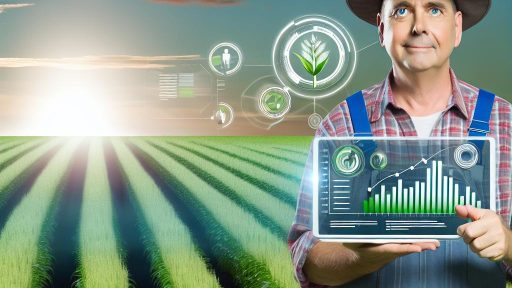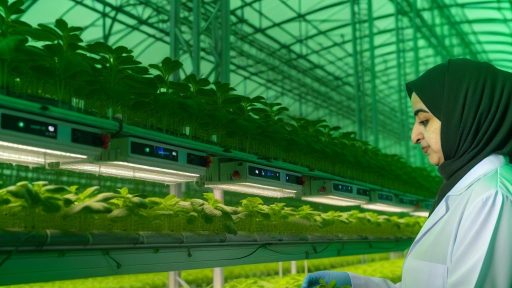Introduction to Controlled Environment Agriculture
Controlled Environment Agriculture, or CEA, refers to farming within a controlled environment.
This method allows farmers to optimize plant growth conditions.
CEA plays a vital role in addressing modern agricultural challenges.
By using technology, farmers regulate environmental variables effectively.
These variables include temperature, humidity, light, and nutrients.
Importance of CEA in Agriculture
CEA significantly enhances food production efficiency.
With CEA, farmers can produce crops year-round, irrespective of weather.
This consistency reduces the impact of climate change on agriculture.
Moreover, CEA minimizes land usage compared to traditional farming.
Technological Innovations in CEA
Technological advancements drive the growth of CEA practices.
Hydroponics and aeroponics are myriads of innovative methods.
These methods use water and nutrients without soil, maximizing space.
LED lighting technology also optimizes energy use in CEA systems.
Benefits of Optimizing Resource Use
By optimizing resource use, farmers reduce operating costs.
This efficiency leads to increased profitability and sustainability.
Transform Your Agribusiness
Unlock your farm's potential with expert advice tailored to your needs. Get actionable steps that drive real results.
Get StartedEfficient water use is critical in areas facing water scarcity.
Additionally, optimized nutrient solutions enhance crop yields.
Types of Resources Used in Controlled Environment Agriculture
Water Management
Water stands as one of the most critical resources in controlled environment agriculture (CEA).
Efficient water use enhances crop growth and minimizes waste.
Hydroponic systems utilize nutrient-rich water instead of soil.
Additionally, recirculating water systems can significantly reduce overall usage.
Monitoring tools help track moisture levels precisely.
Utilizing rainwater harvesting can further augment water sources.
Energy Efficiency
Energy plays a vital role in maintaining optimal growing conditions.
LED lighting systems offer energy-efficient alternatives to traditional bulbs.
These lights can be tailored to specific plant needs, enhancing growth rates.
Proper insulation in structures reduces heating and cooling costs.
Renewable energy sources, like solar panels, optimize energy consumption.
Regularly scheduled maintenance ensures that all systems operate efficiently.
Nutrient Optimization
Nutrients form the backbone of healthy plant development in CEA.
Precision agriculture techniques allow for tailored nutrient delivery.
Understanding plant nutrient requirements leads to effective fertilization strategies.
A balance of macro and micronutrients supports robust growth.
Utilizing organic fertilizers can enhance soil health in vertical farming systems.
Advanced sensors can monitor nutrient levels in real-time.
Space Utilization
Space efficiency is paramount in CEA to maximize outputs.
Vertical farming techniques allow for higher density planting.
Stacked systems and modular designs increase usable space significantly.
Utilizing hydroponics or aeroponics eliminates the need for traditional soil beds.
Showcase Your Farming Business
Publish your professional farming services profile on our blog for a one-time fee of $200 and reach a dedicated audience of farmers and agribusiness owners.
Publish Your ProfileFlexible planting schedules enable year-round productivity.
Automation in planting and harvesting can enhance labor efficiency.
Strategies for Water Conservation in CEA Systems
Implementing Efficient Irrigation Techniques
Efficient irrigation systems reduce water waste significantly.
Drip irrigation delivers water directly to plant roots.
This method minimizes evaporation and runoff.
Additionally, automated systems can adjust water supply based on moisture levels.
These techniques enhance plant growth while conserving resources.
Utilizing Rainwater Harvesting
Collecting rainwater offers a sustainable water source.
Install rain barrels to capture surplus water from roofs.
Integrate these systems into your CEA setup for irrigation.
Proper filtration ensures the water remains suitable for plants.
Moreover, this method reduces reliance on municipal water sources.
Employing Water-Saving Technologies
Technology can play a critical role in water conservation.
Install moisture sensors to monitor soil conditions accurately.
Use data analytics to optimize watering schedules.
Smart irrigation controllers adjust the timing based on weather forecasts.
Such innovations contribute to significant water savings in CEA.
Regular Maintenance and Inspection
Maintaining equipment ensures it operates efficiently.
Regularly inspect irrigation systems for leaks or blockages.
Quick repairs prevent water loss and enhance performance.
Schedule routine checks to keep systems in top condition.
This proactive approach can lead to long-term savings.
Implementing Water Recycling Practices
Recycling water can dramatically reduce consumption.
Set up systems to reuse nutrient-rich runoff from plants.
This recycled water can be filtered and employed effectively.
Implementing such practices not only conserves water but also enriches the soil.
Furthermore, this approach aligns with sustainability goals.
Gain More Insights: Drone Technology Transforming Farm Operations
Energy-efficient Technologies for Lighting and Climate Control
Introduction to Energy Efficiency
Energy efficiency plays a crucial role in controlled environment agriculture.
Implementing innovative technologies can significantly reduce energy consumption.
Consequently, these technologies contribute to sustainable farming practices.
Lighting Technologies
LED lighting has revolutionized how we grow plants indoors.
These lights consume less energy compared to traditional bulbs.
Moreover, LEDs provide specific wavelengths that enhance plant growth.
This adaptability allows farmers to optimize light for different plant types.
Smart Lighting Systems
Smart lighting systems offer even greater control.
They use sensors to adjust brightness based on natural light levels.
As a result, they minimize unnecessary energy use.
This approach also helps in maintaining optimal growing conditions.
Climate Control Technologies
Effective climate control is essential for plant health.
Showcase Your Farming Business
Publish your professional farming services profile on our blog for a one-time fee of $200 and reach a dedicated audience of farmers and agribusiness owners.
Publish Your ProfileModern HVAC systems now use advanced technologies to improve efficiency.
For instance, variable refrigerant flow systems adjust cooling based on needs.
This flexibility results in less energy waste during operation.
Automated Climate Monitoring
Automated climate monitoring systems enhance decision-making.
They collect real-time data on temperature and humidity levels.
Using this data, farmers can make timely adjustments to their systems.
This responsiveness leads to improved energy efficiency and plant growth.
Renewable Energy Integration
Integrating renewable energy sources further boosts efficiency.
Solar panels can supply power to lighting and climate control systems.
This reduces reliance on fossil fuels and lowers operating costs.
Additionally, battery storage solutions can store excess energy for later use.
Benefits of Renewable Integration
The integration of renewables promotes environmental sustainability.
It significantly decreases greenhouse gas emissions from operations.
Ultimately, this practice supports the broader goals of sustainable agriculture.
Gain More Insights: Secure Financial Management For Farmers Through Agri-Fintech Solutions
Nutrient Management Practices to Optimize Crop Yield and Health
Understanding Nutrient Needs
Plants require specific nutrients for optimal growth.
Understanding these nutrients ensures effective management.
Critical nutrients include nitrogen, phosphorus, and potassium.
Each nutrient plays a unique role in plant development.
For instance, nitrogen promotes leaf growth and overall vigor.
Soil Testing for Optimal Fertility
Soil testing identifies nutrient deficiencies and excesses.
This process allows growers to tailor their fertilization strategies.
Regular testing improves soil health and crop outcomes.
Additionally, it helps in managing pH levels effectively.
Creating a Fertilization Plan
A structured fertilization plan optimizes resource use.
It should be based on soil test results and crop requirements.
Utilizing slow-release fertilizers minimizes nutrient leaching.
Incorporating organic amendments boosts long-term soil fertility.
Utilizing Precision Agriculture
Precision agriculture techniques enhance nutrient application efficiency.
This approach uses data and technology for precise management.
Utilizing GPS and drones helps monitor field variability.
In turn, this ensures targeted nutrient delivery to crops.
Implementing Crop Rotation
Crop rotation improves soil health and nutrient availability.
This practice reduces pest and disease pressure on crops.
Diverse planting increases soil organic matter content.
Consequently, it enhances overall soil fertility over time.
Adopting Integrated Nutrient Management
Integrating organic and inorganic fertilizers enhances nutrient use.
This approach promotes sustainable agriculture practices.
It also reduces reliance on chemical inputs significantly.
Farmers should evaluate local resources for organic options.
Showcase Your Farming Business
Publish your professional farming services profile on our blog for a one-time fee of $200 and reach a dedicated audience of farmers and agribusiness owners.
Publish Your ProfileMonitoring and Adjusting Practices
Regular monitoring of plant health is essential.
By observing growth patterns, adjustments can be made promptly.
Utilizing technology helps in tracking nutrient uptake effectively.
Additionally, assessing weather impacts allows proactive management.
See Related Content: Internet of Things (IoT) Applications in Sustainable Agriculture
Soil vs. Hydroponic Systems
Understanding the Differences
Soil systems and hydroponic systems have distinct characteristics.
Soil supports microbial activity that enhances plant growth.
In contrast, hydroponic systems use nutrient solutions for plant nourishment.
Biodiversity in soil promotes resilience against pests and diseases.
However, hydroponics offers a more controlled growing environment.
Resource Optimization in Soil Systems
Soi systems can optimize resource use through specific agricultural techniques.
Crop rotation improves soil fertility and reduces pest cycles.
Cover cropping not only prevents soil erosion but also enriches it.
Additionally, careful moisture management is crucial for success.
These practices enhance soil health and yield efficiency.
Benefits of Hydroponic Systems
Hydroponic systems drastically reduce water usage compared to soil systems.
They eliminate the need for herbicides and pesticides.
Moreover, hydroponics enables year-round crop production, irrespective of seasons.
This method allows for precise nutrient management tailored to plant needs.
Consequently, hydroponics can yield significantly more produce per square foot.
Choosing the Right Substrate
Choosing the right substrate is critical for optimizing resources.
Coconut coir is a popular substrate in hydroponics.
It provides excellent water retention and aeration.
Rock wool is another effective option, offering stability and water retention.
However, many growers still prefer traditional soil for its natural buffering capacity.
Ultimately, the choice of substrate depends on the specific crop and environmental conditions.
Combining Techniques for Maximum Efficiency
Some growers are hybridizing soil and hydroponic methods.
Integrating composting with hydroponics can enhance nutrient availability.
This approach capitalizes on the benefits of both systems.
Furthermore, it fosters sustainability in agricultural practices.
Adopting innovative strategies can lead to significant resource savings.
You Might Also Like: Smart Energy Management Systems for Modern Farms
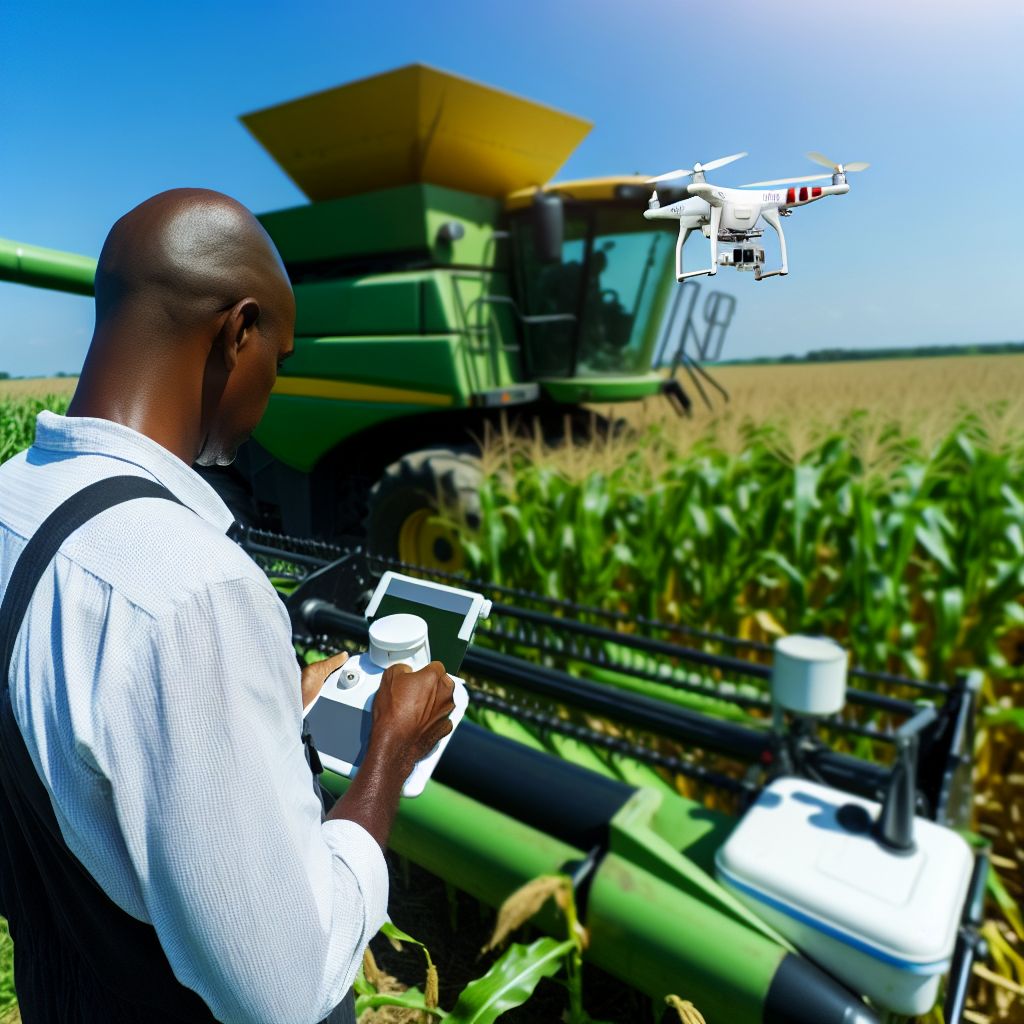
Role of Automation and Technology in Resource Monitoring and Management
Importance of Automation
Automation plays a crucial role in modern agriculture.
It enhances efficiency in resource management.
Farmers can monitor conditions in real-time.
Moreover, automation helps in reducing waste.
Technologies in Use
Several technologies drive automation in agriculture.
- Soil sensors provide vital data on moisture levels.
- Aerial drones monitor crop health from above.
- Climate control systems optimize environmental conditions.
Data-Driven Decisions
Data collection systems gather significant agricultural data.
This data supports informed decision-making.
Farmers can adjust practices based on accurate readings.
Showcase Your Farming Business
Publish your professional farming services profile on our blog for a one-time fee of $200 and reach a dedicated audience of farmers and agribusiness owners.
Publish Your ProfileAs a result, they achieve better yields and resource savings.
Remote Monitoring Systems
Remote monitoring systems enable off-site management.
Farmers can track conditions from anywhere.
This flexibility enhances responsiveness to issues.
Consequently, it minimizes potential losses.
Integration with IoT
The Internet of Things (IoT) revolutionizes farming techniques.
Connected devices streamline communication and control.
They enable the automation of routine tasks.
Additionally, they keep farmers informed about status updates.
Benefits of Technology Adoption
- Reducing resource consumption through efficient management.
- Enhancing crop monitoring for better yields.
- Improving overall farm productivity and sustainability.
Future Trends
The future of controlled environment agriculture relies on continuous innovation.
Advancements in AI and machine learning show promise.
These technologies will further refine resource management.
Ultimately, they will support sustainable farming practices.
Case Studies of Successful Resource Optimization in Controlled Environment Agriculture
Vertical Farming Innovations
One notable case is the GreenSky Vertical Farm in Chicago.
This facility employs advanced hydroponic systems.
These systems significantly reduce water usage compared to traditional methods.
Moreover, they maximize crop yield in limited space.
As a result, GreenSky can produce fresh vegetables year-round.
Energy Management Systems
Next, consider the EcoGrow Farm in Seattle.
This farm utilizes smart energy management systems.
These systems monitor energy consumption in real-time.
Consequently, they optimize energy use based on crop needs.
This approach has lowered energy costs by 30%.
Integration of IoT Technologies
Another success story is the Urban Harvest operation in Toronto.
This farm integrates Internet of Things (IoT) technologies throughout its processes.
Sensors track humidity, temperature, and nutrient levels.
As a result, farmers can adjust conditions dynamically to suit plant growth.
This optimization leads to a 20% increase in crop quality.
Case of Closed-Loop Systems
Additionally, the FreshField facility in Denver employs closed-loop systems.
This method recycles water and nutrients effectively.
Such practices enhance sustainability and reduce waste significantly.
Thus, FreshField has improved its resource efficiency by 40%.
Collaboration with Technology Firms
Lastly, the AgriTech partnership with RazorFarm in San Francisco illustrates collaboration benefits.
This partnership focuses on developing AI-driven solutions for resource management.
The innovative algorithms analyze data and predict resource needs.
Consequently, they optimize water and light use effectively.
Through this collaboration, resource waste decreased by 25%.
Future Trends in Resource Use Optimization for Sustainable Agriculture
Emerging Technologies
Emerging technologies offer innovative solutions for resource optimization.
Hydroponics and aeroponics significantly reduce water usage.
These methods enable farmers to grow crops without soil.
Showcase Your Farming Business
Publish your professional farming services profile on our blog for a one-time fee of $200 and reach a dedicated audience of farmers and agribusiness owners.
Publish Your ProfileAdditionally, vertical farming maximizes land use efficiency.
Smart sensors and IoT devices enhance management practices.
They monitor environmental conditions to optimize growth parameters.
Consequently, farmers can adjust inputs in real-time.
Data-Driven Decision Making
Data-driven decision making is revolutionizing agriculture.
Farmers can analyze data for precision agriculture practices.
Using satellite imagery improves crop monitoring and yield predictions.
Data analytics helps identify resource wastage patterns.
Moreover, machine learning algorithms optimize planting schedules.
This approach enhances efficiency and minimizes costs.
Sustainable Water Management
Efficient water management is critical for sustainable agriculture.
Technologies like drip irrigation reduce water consumption.
They deliver water directly to the plant roots.
Rainwater harvesting systems also enhance water availability.
Additionally, water recycling practices minimize waste.
Farmers can use treated wastewater for irrigation purposes.
Renewable Energy Integration
Renewable energy plays a vital role in reducing agriculture’s carbon footprint.
Solar panels are increasingly used to power greenhouses.
Wind turbines provide clean energy for farm operations.
These technologies decrease reliance on fossil fuels.
Integrating renewable energy helps lower operational costs.
Furthermore, it promotes long-term sustainability in farming.
Collaboration and Knowledge Sharing
Collaboration among stakeholders enhances resource optimization.
Farmers, researchers, and technology providers can share best practices.
Cooperatives can pool resources for better technology access.
Additionally, workshops and training sessions foster knowledge exchange.
This collaboration drives innovation in resource use optimization.
Ultimately, it promotes a more sustainable agricultural future.
Additional Resources
Agriculture Innovation: 10 Tech Trends to Watch in 2023 …
Future food-production systems: vertical farming and controlled …

